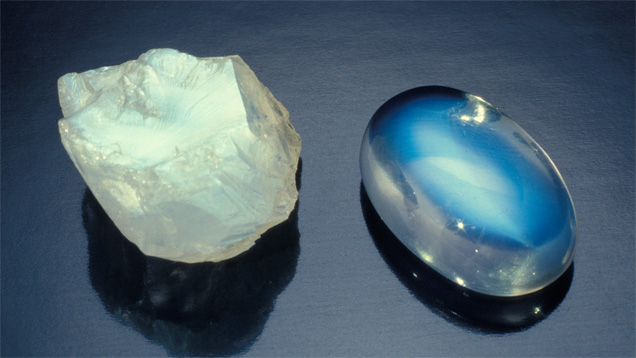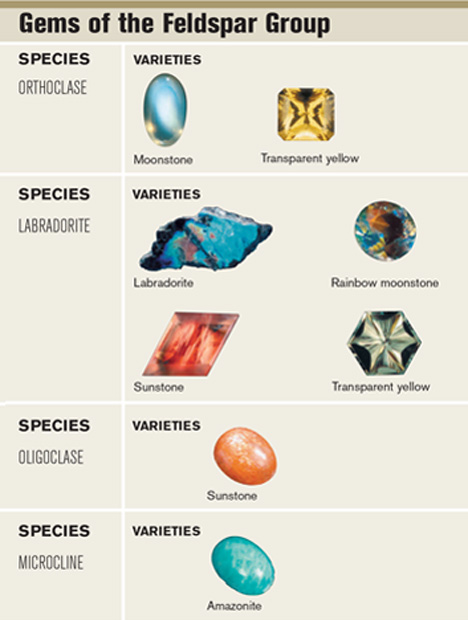Tuesday, November 21, 2017
What is moonstone vs rainbow moonstone?
You can find these stones all over the place. And you maybe didn't even know they are not the same.
Moonstone’s delicate beauty and its long-established heritage make it perhaps the most familiar gem-quality member of the feldspar group.
Feldspars are the most widespread minerals in the earth’s crust, as well as some of the most diverse. You can pick up a rock anywhere in the world, and you’ll probably find that it contains a mineral or two from the feldspar group.
Moonstone is a variety of the feldspar-group mineral orthoclase. It’s composed of two feldspar minerals, orthoclase and albite. At first, the two minerals are intermingled. Then, as the newly formed mineral cools, the intergrown orthoclase and albite separate into stacked, alternating layers.
When light falls between these thin, flat layers, it scatters in many directions, producing the phenomenon called adularescence. Adularescence is the light that appears to billow across a gemstone, giving its surface a glowing appearance.
Moonstones are found in an array of colors---peach, orange, yellow, green, grey, black, blue---some with a white adularescence (like the moon) or with blue adularescence (like moonlight on water).
Perhaps the most captivating aspect of adularescence is its appearance of motion. The misty light seems to roll across the gem’s surface as you change the viewing angle.
Other feldspar minerals can also show adularescence. One is a labradorite feldspar found mainly in Labrador, Canada. Another labradorite—found in Madagascar—has a multicolored adularescence over a light bodycolor. It’s known in the trade as rainbow moonstone, despite the fact that it’s actually a variety of labradorite rather than orthoclase.
So basically, rainbow moonstone is a type of labradorite. Even I did not know that until recently.
They are both genuine gemstones that look very similar, and both are beautiful.
Subscribe to:
Post Comments (Atom)



No comments:
Post a Comment